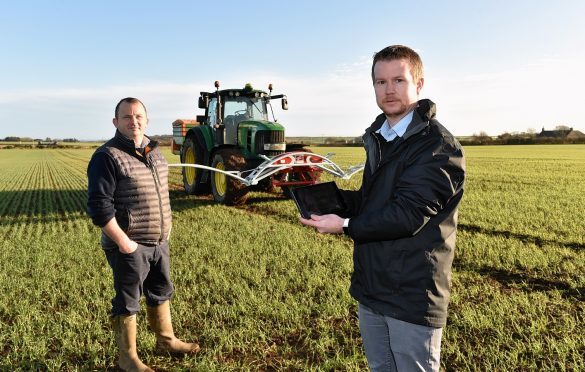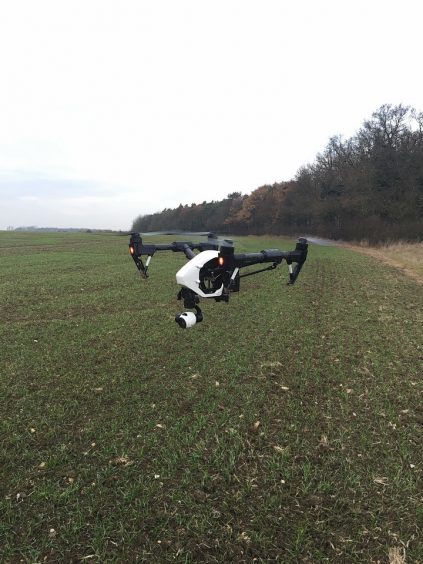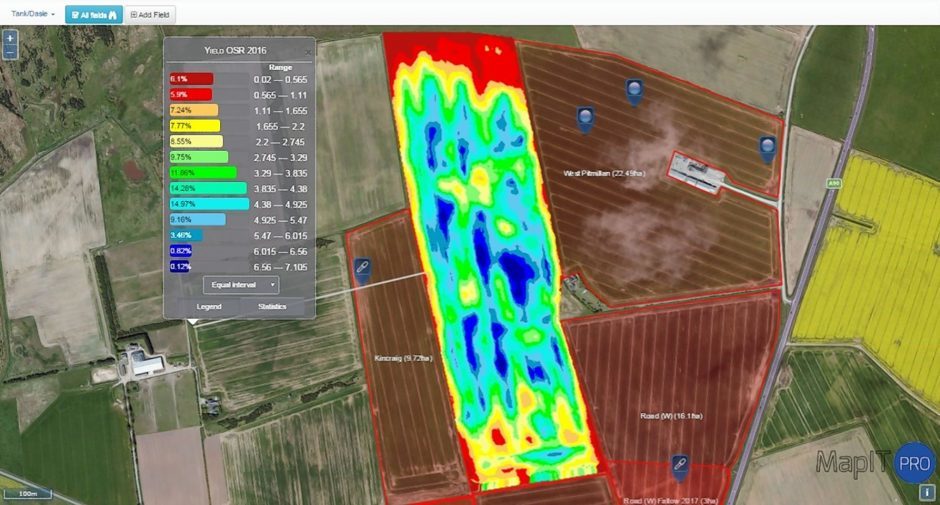Over 30% of farms are now routinely using some form of ‘precision’ technology. Press and Journal Farming caught up with Agrovista’s head of precision technology, Lewis McKerrow, to find out more
The growth in uptake in precision farming technologies is set to be rapid in the years ahead.
According to Agrovista’s head of precision technology, Lewis McKerrow, adoption of the technology will be driven by machinery manufacturers and farmers’ intrigue in what kit can do.
“In recent years, tractors, sprayers, spreaders and combines are being sold with sensing, recording and measuring ‘extras’ now being supplied as standard.
“Meanwhile, drones, cloud applications and software are now commonplace in many farm businesses,” said Mr McKerrow.
“It is very apparent that personal interest is encouraging investigation and investment in precision tools, primarily either by technically minded operators wanting more accurate measurement, or younger farmers opting to implement a more tech-driven management style when they take over managing farm businesses.”
He said precision farm technology covered a multitude of systems including: soil and yield mapping; variable-rate application of seed, spray and fertiliser; precise forecasting of weather and disease; and machine automation or autosteer.
“Brisk advances in technology are making access to precision tools, easier, better and cheaper,” added Mr McKerrow.
“Drone developments, in particular, fascinate me. This time last year, the accurate mapping of blackgrass and brome would have required a high-end drone with an NDVI camera, costing around £10,000 and requiring a specialist operator.
“Today, you can buy a DJI drone that will produce a similar map with standard camera gear, and cost you under £1,000.
“Using it is simple, all you need to do is download the operating app to your smartphone and you can weed map the whole of my farm yourself, to a very detailed standard.”
However, to make the most of the technology, Mr McKerrow said getting to know the kit you have and the data it generates, is the first step.
“Then it’s important to think about what you want additional technology to achieve for you, which could be matching variable rate sowing to soil type, or measuring and explaining yield variability across your farm,” he added.
Farmers should also consider what technology is fitted when buying new or second-hand machinery – for example both Claas and John Deere now have Telematics as optional extras.
“These are systems that are connectable to the internet allowing a seamless transfer of real-time data from the cab straight into a farmer’s central storage.
Mr McKerrow said the key to all technology would be the ability of one manufacturer’s system being able to talk to another, or having access to tools that will convert data source to match another.
“Manufacturers are getting better at generating common data outputs, but there are still limitations and frustrations, particularly with older models,” he added.
He said Agrovista had made significant investment in its Axis system – a cloud-based agronomy management service designed to help streamline farm record-keeping and data flow from disparate sources.
“The Axis software crunches crop biomass data scanned several times over a season, from establishment through to early yield prediction at ear emergence, to create field zones for variable seed rate and spray and fertiliser mapping,” said Mr McKerrow.
In addition, the system provides weather and spray forecasting and in future the company plans to develop the system to use yield data, grain prices, diesel and seed costs to calculate return on investment.
Mr McKerrow said: “Even with the functionality we have today, this tool effectively allows you to make decisions for the next crop rather than just reviewing what happened last season.
“It’s all very good monitoring and applying variable crop treatments in-season, but key to getting the most from the technology, is using your farm and soil data to get crop establishment right and to minimise rectifying treatments required during the growing season.”


